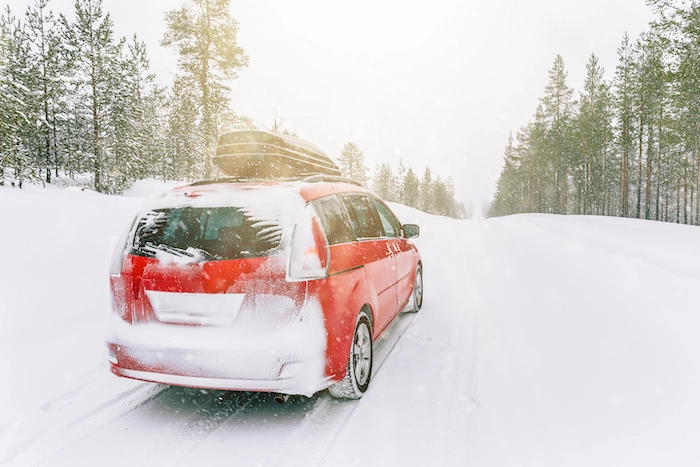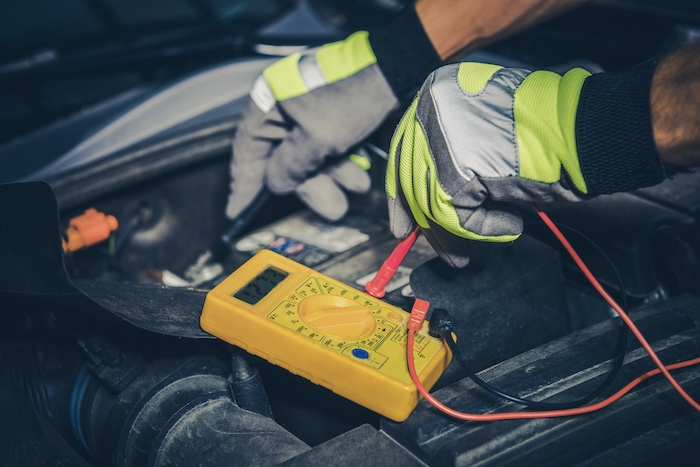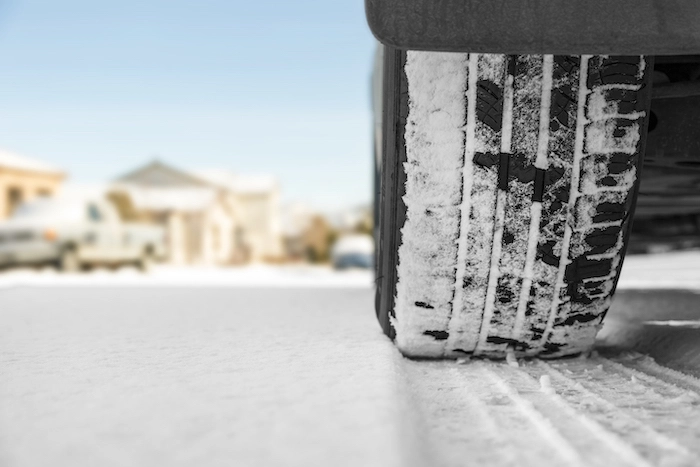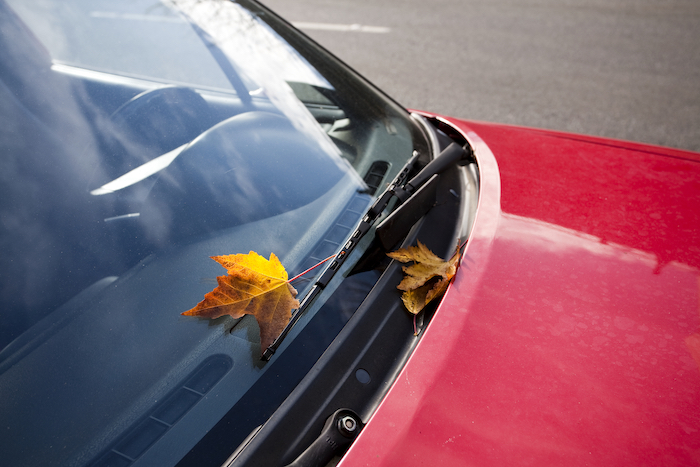Winter Weather Preparation
As the first breaths of winter begin to blow in, it can be easy to get lost in the warmth and joy you feel at home with your family: the comfy couch, the hot cocoa, and the cozy blankets. However, while you’re enjoying these comforts, it’s crucial to remember that the driving conditions outside are rapidly changing. With the temperatures dropping and the threat of snow and ice looming, winterizing your car becomes an essential task for ensuring your safety on the road.

Winter weather can transform even the simplest journey into a challenging experience. Ice-covered roads and reduced visibility can make driving perilous, and the last thing you want is to be caught off guard. That’s why preparing your vehicle for the colder months ahead can save you from accidents, breakdowns, and unnecessary stress.
Start with the essentials by checking your tires. Winter tires offer better traction in snow and ice compared to all-season tires. If you live in an area prone to harsh winters, consider investing in winter tires to enhance your vehicle’s grip on slippery roads. Also, ensure your tires are properly inflated, as cold temperatures can cause tire pressure to drop.

Battery
As the temperature drops, the power of your car battery decreases. Cold weather can reduce a battery’s efficiency by up to 50%, so starting your car in winter will require significantly more power. It’s vital to check the health and condition of your car battery as winter approaches. Look for signs of corrosion around the terminals, and ensure the connections are tight and clean. If your battery is older than three years or showing signs of weakness — like slow engine cranking or dimming lights — consider having it tested or replaced. A reliable battery is essential for winter driving, as it powers not just the ignition but also essential components like your headlights and heater. Taking these precautions can help prevent unexpected breakdowns and ensure your vehicle starts smoothly, even on the coldest mornings.
Checking Your Cooling System
While it might not be the first thing on your mind as winter sets in, your cooling system plays a crucial role beyond just keeping your engine from overheating in the summer. The right coolant blend is vital; it contains anti-corrosive additives that protect your engine components, water-pump lubricants for efficient operation, and, most importantly, antifreeze materials that prevent your coolant from freezing solid overnight.
To ensure your cooling system is winter-ready, check the coolant levels and the mix of antifreeze in your radiator. A 50/50 mix of coolant and water is typically recommended for optimal performance. You can use a coolant tester to check the freeze protection level of your current coolant. If it’s not up to par, flush the system and refill it with the appropriate blend. Additionally, inspect your radiator hoses and clamps for any signs of wear or leaks, as these can lead to overheating or coolant loss when temperatures dip.
Taking these steps to maintain your battery and cooling system can help you avoid costly repairs and ensure your car runs smoothly throughout the winter months. A little preventive maintenance now can save you time, money, and stress later, allowing you to enjoy the cozy warmth of home while feeling secure in your vehicle’s reliability.
Tires
Tires are essential for maintaining control of your vehicle during winter conditions. They are one of the most critical components impacted by the cold snap in the air. As temperatures drop, the air inside your tires contracts, which can lower tire pressure significantly. Proper tire pressure is crucial for optimal handling, braking, and fuel efficiency. Driving with underinflated tires not only reduces traction but also increases the risk of tire blowouts, especially in icy or snowy conditions.
Switching to winter tires is highly recommended for areas that receive significant snowfall. While all-season tires may seem adequate, they are not designed for extreme winter conditions. The rubber in all-season tires hardens when temperatures fall below freezing, which diminishes their ability to grip the road effectively. On the other hand, winter tires are specifically engineered with specialized rubber compounds that remain flexible and soft in low temperatures, allowing for better traction on snow and ice.
These tires also feature deeper treads with unique patterns designed to channel snow, slush, and water away from the contact patch, enhancing grip and reducing the risk of hydroplaning. If you live in a region prone to heavy snowfall or icy roads, investing in a set of winter tires can significantly improve your vehicle’s stability and safety.


Windshield
Visibility during winter can pose significant challenges for many drivers. Snow and ice can easily accumulate on your windshield, and if they get stuck between the wiper blades and the glass, your wipers may struggle to clear the view, greatly reducing your visibility. Additionally, your windshield wiper fluid can freeze overnight, leaving you without an essential tool for maintaining a clear line of sight.
To combat these issues, there are several proactive steps you can take. First, consider installing heavy-duty winter wiper blades, which are designed to withstand harsh conditions. These blades have a unique design that prevents ice and snow buildup, ensuring they maintain contact with your windshield for optimal cleaning.
Next, don’t forget about your windshield washer fluid. Regular fluids can freeze in low temperatures, so it’s wise to switch to a washer fluid with antifreeze properties. This will ensure your fluid remains liquid even in the coldest weather, allowing you to effectively clear your windshield whenever necessary.
FAQ: Winter Vehicle Maintenance
Q1: Why is it important to winterize my car?
A: Winterizing your car is essential to ensure safe driving during cold weather. As temperatures drop, driving conditions become more challenging, and proper vehicle maintenance can prevent breakdowns, improve handling, and enhance overall safety on the road.
Q2: How does cold weather affect my car battery?
A: Cold temperatures can significantly decrease a battery’s power and efficiency. As temperatures drop, your car may require more power to start. It’s important to check the health and condition of your battery, looking for signs of corrosion and ensuring connections are clean and tight. If your battery is older than three years, consider testing or replacing it.
Q3: What should I check in my cooling system for winter readiness?
A: Your cooling system is crucial during winter, as it prevents your engine from freezing. Ensure your coolant is at the correct level and that it has the right mix of antifreeze to prevent freezing. A 50/50 blend of coolant and water is recommended. Additionally, check for leaks in radiator hoses and clamps to avoid overheating issues.
Q4: Why are tires important in winter?
A: Tires are critical for maintaining control of your vehicle in winter conditions. Cold temperatures can lower tire pressure, affecting handling and safety. For areas with heavy snowfall, switching to winter tires is advisable, as they remain flexible and provide better traction on snow and ice compared to all-season tires.
Q5: How can I ensure my tires are ready for winter?
A: Regularly check your tire pressure, as it can drop in cold weather. Ensure your tires have adequate tread depth; a minimum of 2/32 inches is recommended for safe winter driving. You can use the penny test to check tread depth. If you’re unsure about your tires, consult a professional for advice.
Q6: How can I maintain visibility with my windshield during winter?
A: Visibility is crucial during winter driving. Snow and ice can accumulate on your windshield, and wiper blades can struggle to clear it. Consider installing heavy-duty winter wiper blades and using washer fluid with antifreeze properties to prevent freezing. Regularly inspect your wipers for wear and ensure your washer fluid reservoir is full.
Mission Auto Repair has been helping people maintain and repair their vehicles for years. Our lead technician has over 25 years of experience, covering everything from in-depth diagnostics to factory-recommended maintenance. If you need help preparing your car for winter, look no further. Call our office today to make your appointment!
